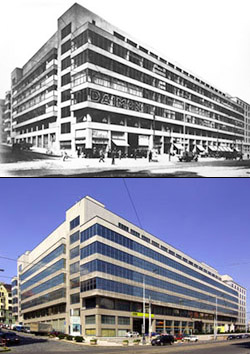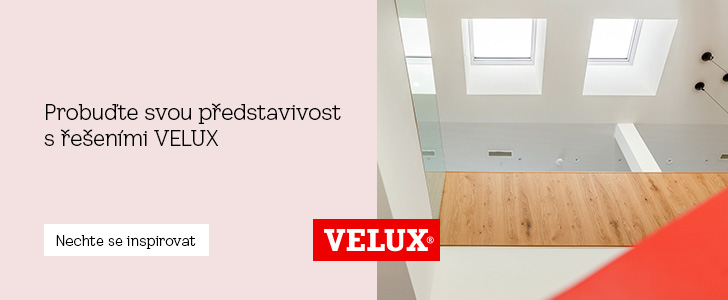
The Prague Exhibition Palace returned to life 15 years ago
 |
The Trade Fair Palace, whose name is most commonly associated today with the potential new home of the Slav Epic by Alphonse Mucha, has since hosted a number of interesting exhibitions. Visitors had the opportunity to see works from the collections of Daniel-Henry Kahnweiler or Vincenc Kramář, retrospectives of Stanislav Kolíbal, Adriena Šimotová, Jiří Kolář, Květa and Jitka Válová, Pavel Brázda, Andy Warhol, or photographers Josef Koudelka and Annie Leibovitz.
The building, which is an architectural unique, was built according to the design of Josef Fuchs and Oldřich Tyl (1925 to 1928) for the Prague Sample Fairs company. It astonished not only with its vastness and concept but also with its rational approach. The structure has eight above-ground and two underground floors and extensive exhibition halls. The entrance hall, framed by galleries, penetrated all floors, with a cinema located beneath it. The café and restaurant on the top floor offered views of Prague.
The Trade Fair Palace is among the largest functionalist achievements in Europe. It was praised by the renowned modern architect Le Corbusier during his visit to Prague in 1928. However, it was not just to remain as this one building. In Holešovice, a self-sufficient trade fair city was to grow with two palaces (the second at the site of today's Parkhotel) and accompanying buildings for administration. However, on August 14, 1974, the future of the palace was long interrupted by a fire.
The disaster was devastating and caused damage worth hundreds of millions of crowns to the building. The cause of the fire was, according to the investigation, the spontaneous combustion of varnish - the "Trade Fair Palace" was condemned to demolition. After many disputes, it was acquired by the National Gallery in Prague at the end of the 70s. Subsequently, work began on plans to utilize the space for collections of modern art. The gallery could only present its treasures at temporary exhibitions because it did not have sufficient space.
The nearly decade-long reconstruction, which was accompanied by several changes in the opening date, ultimately cost a billion crowns. Among the architects who contributed the most to the rebirth of the monument are Otakar Binar, John Eisler, Karel Hubáček, Miroslav Masák, and Emil Přikryl. The establishment of the new permanent exhibition of the National Gallery was marked by a series of managerial changes, disputed statements, speculations, and financial discrepancies. The palace was not opened until 1995.
According to the then director of the gallery, Martin Zlatohlávek, the person most responsible for making the Trade Fair Palace a representative venue for modern Czech art was Jiří Kotalík, who led the National Gallery from 1967 to 1990. Kotalík stated that he was immensely happy about the opening of the palace, but "only halfway." His idea was to transform the space into a large center for contemporary art, also encompassing architecture, scenography, glassmaking, and design, which he felt was lacking in the exhibitions.
The gallery's activities in the Trade Fair Palace have been associated with several scandals over the last 15 years. The Czech art scene has long been polarized by the position of the leadership of the National Gallery under Milan Knížák, who has a number of opponents among theorists and artists. The palace is, however, the most visited of the several objects of the gallery, currently attracting attention to works from the collection of the Batliner couple from the Vienna Albertina - Claude Monet, Andy Warhol, Wassily Kandinsky, Max Ernst, and others.
The permanent exhibition of 19th, 20th, and 21st-century art introduces visitors to the development of both Czech and foreign art over the past two centuries. Over an area of 13,500 square meters, more than two thousand exhibits are displayed. It also includes examples of architecture, furniture, artistic crafts, fashion, design, and scenography, as well as photography and graphics. The Trade Fair Palace is also a space for various social and commercial events - from fairs and conferences to fashion shows and receptions.
The English translation is powered by AI tool. Switch to Czech to view the original text source.











